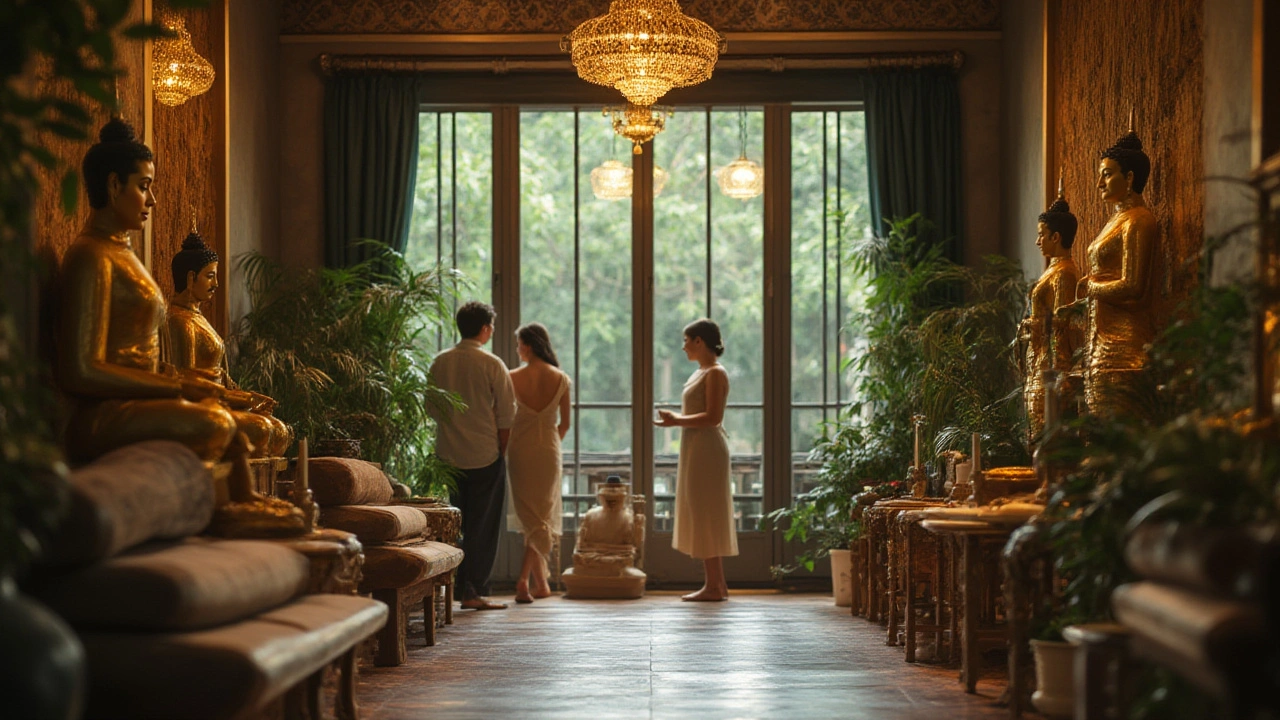Traditional Thai Healing: What It Is and Why It Works
If you’ve heard the term "traditional Thai healing" and wonder if it’s just another massage, you’re not alone. It blends gentle stretches, rhythmic pressure, and breathing to loosen tight muscles and boost energy. Think of it as yoga you get done by a pro, plus a soothing rub.
Unlike a typical Swedish massage that stays mostly on the surface, Thai healing uses the therapist’s hands, elbows, knees and feet to move your body through a series of poses. This active approach helps joints stay flexible, improves circulation, and leaves you feeling both relaxed and refreshed.
What to Expect in Your First Session
When you walk into a Thai healing studio, you’ll usually lie on a mat on the floor. No table needed. The therapist will ask about any injuries or sore spots, then start with simple breathing exercises. From there, they’ll guide you through stretches, applying firm pressure along energy lines called "sen".
Each movement is slow and intentional. You might feel a deep stretch in your hamstrings or a gentle push on your shoulders. The goal isn’t to cause pain; it’s to release tension that’s been hanging around for weeks. Sessions last 60 to 90 minutes, giving enough time to work on the whole body.
How to Find a Trustworthy Thai Healing Therapist
Start by checking online directories that list certified Thai massage practitioners. Look for reviews that mention clean spaces, respectful behavior, and clear communication about pressure levels. A good therapist will explain each step before they do it, so you always know what’s coming.
Ask about their training. Traditional Thai healing comes from a lineage of teachers, so a therapist who studied in Thailand or under a recognized master usually offers a more authentic experience. Don’t be shy about asking about hygiene practices—clean linens and sanitized tools are a must.
Price can vary, but expect to pay a bit more than a regular back rub because of the specialized skill set. Many places offer a first‑time discount or a shorter 45‑minute intro session, which is a smart way to see if the style fits you.
Once you’ve booked, arrive a few minutes early. Wear loose, comfortable clothes that let you move freely. Most studios ask you to remove shoes before stepping onto the mat. If you’re unsure about a stretch, just tell the therapist—adjustments are part of the process.
Traditional Thai healing isn’t just a treat; it can help with chronic back pain, stiff joints, and even stress‑related headaches. By combining movement with mindful breathing, it trains your body to stay relaxed long after the session ends.
So, if you’re curious about a massage that feels more like a gentle workout, give Thai healing a try. It’s a hands‑on way to stretch, unwind, and boost your energy—all in one hour. Your body will thank you, and you’ll probably walk out feeling a little more alive than when you came in.

Thai Massage: Traditional Healing and Modern Wellness in 2025
Discover Thai massage as both a cultural journey and a powerful wellness practice. Learn its meaningful traditions, specific benefits, session tips, and how to choose the best experience—whether you're a curious traveler or craving real relaxation.
view more